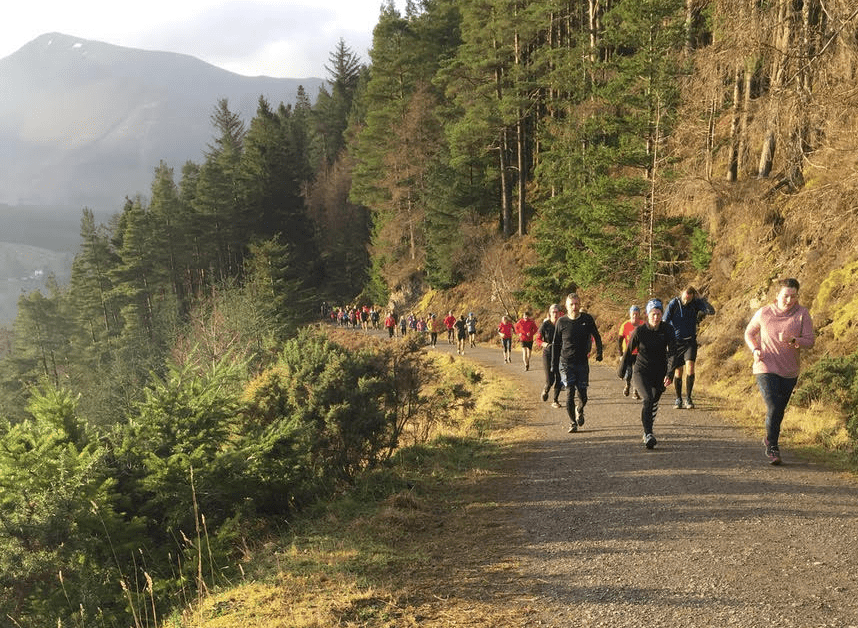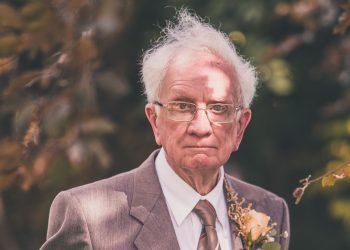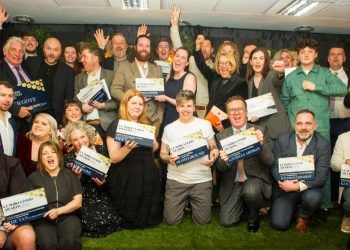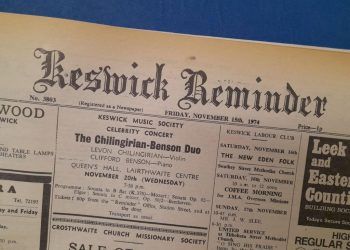
Cumbrian parkruns feature in a new book about the Saturday morning event that’s been hailed as the greatest public health initiative of our time.
How parkrun Changed Our Lives charts the personal stories and the academic research that proves the benefits of the free weekly 5k runs.
Millions of people around the world had registered to do parkrun before lockdown, and they were still signing up throughout the past year when the pandemic called a halt to the events.
Author Eileen Jones set out to see why parkrun is so widely loved and – during the past year – desperately missed, and why it’s been described as a social movement for the common good.
She found a female bishop whose home parkrun is at an abbey, a couple who got married half way round a parkrun, a man who runs it backwards, old runners and very young ones.
Eileen, who lives in Ambleside, is a member of the volunteer team at Fell Foot parkrun, Windermere, and helped set up the new one in Rothay Park in her home town which was only staged six times before lockdown.
She’s also a parkrun tourist and of her 260 events, 104 have been at different venues around the UK and beyond.
The book includes interviews with volunteers at local parkruns, and the author’s own experience of running in the Black Combe event at HM Prison, Haverigg.
She meets a popular fell-running champion who has finished first at Whinlatter Forest, the doctor from Windermere who holds the women’s USA parkrun record, and the “refugees” who turned up at Ford Park, Ulverston, when all other local events had been flooded off.
The book also concentrates on the many people who say that parkrun has changed their lives. “They are people who found solace, companionship, respite from grief, escape from social isolation, a new purpose in life, and just the sheer joy of running every week in good company,” said Eileen.
She met doctors who are prescribing parkrun rather than medication, and talked to the academics whose research has proved the many benefits of taking part or volunteering.
The parkrun concept is simple: turn up every Saturday and walk, jog or run 5k.
A former fell-runner who says she stopped competing because it was unfair on the marshals waiting for her at hilltop checkpoints, Eileen was “born again” as a parkrunner; occasionally well-placed in her age category, she was once proud to be “first old dear” at Old Deer parkrun in London.
She poses the question that parkrun is a new religion, with a litany and liturgy that’s familiar and repeated weekly, and leaves participants feeling better about themselves.
But mostly there are stories of very ordinary runners, walkers and volunteers who explain why parkrun has brought so much joy into their lives.
The book is a Cumbrian collaborative effort.
The cover photo was taken by Laura McGuigan, originally from Barrow and now living in Devon, and the cover was designed by Windermere-based Ellen Longhorn.
The printer is Windermere’s Latitude Press.
The book is dedicated to the memory of John Nettleton, MBE, who was a popular volunteer and runner at Fell Foot and who died aged 92 at the end of last year
How parkrun Changed Our Lives is published by Gritstone Publishing (£9.99) and will be available in bookshops from early next month.








